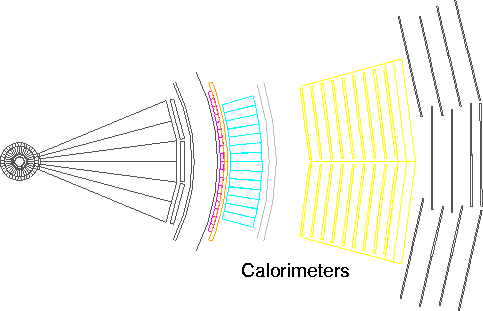The OPAL Calorimeters


Most particles originating from the electron-positron collision interact quite strongly with matter. The calorimeter system is composed of lots of pieces of dense material: the idea is that most particles hitting the calorimeter will slow down and stop. As they do so, they lose energy by collisions with the material of the detector: we detect this energy in various ways, and it allows us to infer the energy of the particle.
The OPAL calorimeter system is subdivided into three main parts:
OPAL's electromagnetic calorimeter system measures the energies and positions of electrons, positrons and photons. It is a total absorption calorimeter mounted between the coil and return yoke of the magnet. The barrel and endcap lead glass systems together cover 98% of the solid angle. Since particles must traverse about 2 radiation lengths of material (mostly due to the magnet coil and pressure vessel) before reaching the calorimeters, most electromagnetic showers start before reaching the lead glass. The presamplers are used to measure the amount of showering in the coil to improve energy resolution. In addition, their high granularity helps improve the neutral pion / photon and the electron / hadron discrimination.
The hadron calorimeter measures the energy of hadrons emerging from the electromagnetic calorimeter and assists in the identification of muons. The iron of the magnet return yoke provides 4 or more interaction lengths of absorber over a solid angle of 97% of 4-pi. The yoke is segmented into layers, with planes of detectors between each layer, and forms a cylindrical sampling calorimeter about one meter thick.
To acheive coverage in solid angle, the hadron calorimeter is constructed in three parts: